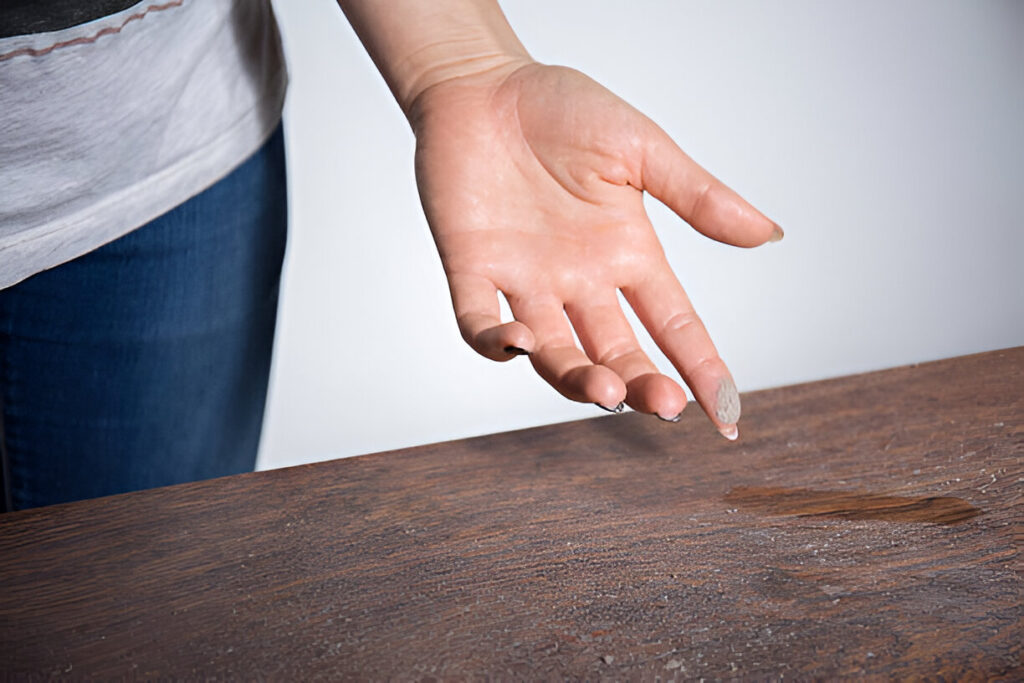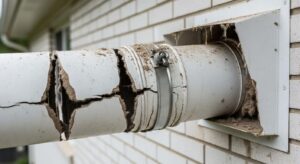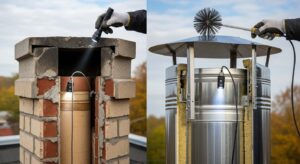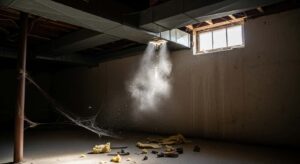Dust buildup is one of the most frustrating problems for homeowners, especially when you’re constantly vacuuming, wiping, and sneezing but can’t figure out where it’s all coming from. Many turn to duct cleaning as a potential solution. But does it really help?
In this blog, we’ll break down exactly when residential air duct cleaning in NJ can reduce dust, when it might not make a noticeable difference, and what else could be causing the buildup. You’ll also learn what steps to take after duct cleaning to make sure your home stays clean and dust-free long term.
When Will Air Duct Cleaning Actually Reduce Dust?
If you’re hoping duct cleaning will solve your dust problems, the answer depends on the condition of your system. In the right situations, it can make a noticeable difference—here’s when it works best.
There’s a Significant Buildup Inside the Ducts
When ductwork hasn’t been cleaned in years, it can become lined with layers of dust, pet hair, dead skin cells, lint, and even construction debris. Over time, these contaminants get stirred up by the airflow, especially when the HVAC system kicks on. This causes small particles to get blown into your living areas through the vents, adding to surface dust.
Cleaning the ducts removes this internal buildup, essentially eliminating a major source of dust from the air circulation cycle. If dust is being recirculated from inside the ducts themselves, a thorough cleaning can result in noticeably cleaner air and fewer particles settling on your furniture.
Your Air Filters Have Been Neglected
If the HVAC filter is clogged, low-quality, or overdue for replacement, it stops trapping dust effectively. This allows particles to travel through the system and deposit inside the ducts. As that buildup grows, some of it can get released back into your rooms over time.
In this case, duct cleaning will reduce dust, but it must be followed up with regular filter changes and better filtration. Otherwise, the system will simply get dirty again, and the dust will return, sometimes even faster than before.
You Have Pets or Allergies
Homes with pets often have more airborne particles, like fur, dander, and dust carried in from outside. These light particles don’t just stay in the air; they get pulled into return vents, where they settle inside the ducts and keep circulating. This can make a clean home feel dusty just days after cleaning.
If anyone in the home has allergies, cleaning the ducts can also reduce triggers. Removing built-up dander, pollen, or mold spores from inside the system improves air quality and helps reduce the amount of irritants being pushed back into your living space.
You Just Moved Into a New Home
Whether the previous owners took good care of the HVAC system is often a mystery. If the home sat vacant, recently underwent renovations, or hasn’t had its ducts cleaned in years, you might inherit a lot of unseen debris in the air system. In older homes, especially, you could be dealing with decades of buildup.
Getting the ducts cleaned before settling in helps you start with a clean baseline. It removes old dust, allergens, and construction residues that may be lingering inside the system, especially important if your family is sensitive to air quality changes or odors coming from vents.
Your Vents Are Blowing Out Dust
If you notice visible dust puffing out when your HVAC system starts, or see dark streaks or residue around the vents, the ducts are likely contributing to the dust in your home. This is a strong indication that there’s internal debris being disturbed by airflow.
In such cases, duct cleaning can immediately improve the situation. By removing the built-up dust inside the system, it reduces how much is carried into the air every time the fan runs—helping surfaces stay cleaner longer and improving your indoor air quality in a noticeable way.
Also Read: How To Find a Good Air Duct Cleaning Company in NJ?
When Will Air Duct Cleaning Not Do Much With Dust?
While air duct cleaning can be helpful for dealing with dust, it isn’t always the fix people expect it to be. Let’s look at the situations where it won’t have much impact, so you don’t waste time or money.
Your Ducts Are Already Clean or Well-Sealed
In some cases, especially with newer homes or well-maintained systems, the ductwork may not be the issue at all. If you’ve been using high-quality filters, changing them regularly, and the system is professionally maintained, your ducts may already be relatively clean.
In this situation, dust is likely coming from indoor sources: fabrics, carpet fibers, foot traffic, open windows, or just everyday life. Duct cleaning won’t solve that kind of dust—it only helps when the ducts themselves are part of the problem.
You’re Not Maintaining Filters or Humidity Levels
Cleaning ducts won’t provide lasting results if the root issues aren’t addressed. If your filters remain dirty or unchanged, or you’re using poor-quality filters that don’t catch fine particles, the ductwork will collect debris again quickly. You’ll be back to square one within months.
Low humidity also plays a role. In very dry air, dust particles stay suspended longer and settle slower, making them more noticeable. Without managing indoor humidity or maintaining the filtration system, even freshly cleaned ducts won’t be enough to keep dust under control.
Leaks and Gaps in the Ductwork
Dust can enter your system from unexpected places—like unconditioned crawlspaces or attics—through leaks in the ductwork. These gaps pull in dirty air that bypasses the filter entirely, bringing dust and other particles straight into your home’s airflow.
If you have leaky or poorly sealed ducts, cleaning them won’t prevent more dust from being pulled in. You’ll need to address those structural issues first. Once the system is properly sealed, duct cleaning can actually help you maintain a dust-free environment more effectively.
You’re Expecting a “One-Time” Fix
Duct cleaning isn’t a cure-all. It’s one piece of the puzzle in managing indoor dust. If you go back to using low-quality filters or skip maintenance, dust will accumulate again—sometimes faster than before. Cleaning ducts is only effective when it’s followed by better filtration, regular HVAC care, and good cleaning habits throughout the home.
For best results, treat duct cleaning as part of an overall strategy for cleaner indoor air—not a one-off service that solves everything. That way, it actually supports your efforts to reduce dust long-term and helps maintain a healthier indoor environment.
Why Homes Get So Dusty – And the Link With Air Ducts
Now that you know the air duct cleaning works in some cases and not in others, understanding where dust really comes from can help explain why it is so. Here’s how dust builds up—and how ductwork plays into it.
What Really Causes Dust in Homes
Dust is made up of many everyday things—skin flakes, fabric fibers, pollen, mold spores, pet dander, and even particles from cooking or burning candles. These particles are so light that they stay floating in the air and then settle on surfaces again and again. That’s why you can clean on Monday and see dust by Wednesday—it’s not a sign of poor cleaning but of how easily dust re-enters your space.
A normal level of dust is expected in any home. But if you find yourself wiping down furniture constantly or noticing visible buildup within a day or two, it usually means something deeper is affecting air circulation or indoor air quality. That’s where your ductwork often comes into the picture.
How Ducts Go From Circulating Air to Spreading Dust
Your HVAC system is designed to move air efficiently through your home—pulling it in through return vents, filtering it, and pushing it back out through supply vents. Ideally, this helps trap airborne dust. But when filters are low quality, clogged, or overdue for replacement, particles pass through easily. Many of them settle inside the ductwork, especially around corners and registers where airflow slows down.
Over time, this buildup turns into a secondary dust source. Instead of just circulating air, your ducts start releasing trapped debris back into your rooms every time the system turns on. If you’ve had pets, renovation work, mold, or an aging HVAC system, the problem gets worse even faster. You might notice signs like dust puffs from vents, quick buildup on furniture, or even allergy symptoms that spike when the air kicks in—clear indicators that your ducts are feeding dust into the very spaces you’re trying to keep clean.
Why It’s a Bigger Issue in NJ Homes
In New Jersey, every season brings new dust triggers—spring pollen, summer humidity, fall debris, and closed windows during winter that trap air inside. These seasonal shifts make it harder for ducts to stay clean, especially if filters aren’t changed regularly or the system hasn’t been maintained.
Older homes in NJ are particularly vulnerable. Many have never had their ductwork inspected or cleaned, and that buildup compounds over time. That’s why residential air duct cleaning in NJ is more than just a one-time fix—it’s often a necessary step if you’re serious about tackling ongoing dust problems at the source.
Also Read: Why Post-Renovation Air Duct Cleaning Should Be a Priority
Long-term Dust Control: How to Maintain a Clean Home After Air Duct Cleaning
Air Duct cleaning can help with dust issues, but it won’t keep your home dust-free forever. For lasting results, you’ll need to follow up with a few consistent habits.
Change Your Filters on Schedule
After duct cleaning, your HVAC filters are the front line of defense. If you go months without replacing them, all the progress made during the cleaning will unravel. Dirty filters allow dust to flow freely into the ducts—and right back out into your home.
For most homes, filters should be changed every 1–3 months depending on the season, system use, and whether you have pets. High-efficiency filters (like MERV 8–13) are better at trapping fine dust and allergens. Stick to a regular schedule and set reminders if needed—it makes a bigger difference than most people realize.
Use an Air Purifier in Key Areas
Even with clean ducts, dust still builds up indoors from day-to-day living—especially in bedrooms, home offices, and spaces with carpeting or upholstery. That’s where a good air purifier comes in. It can capture particles that your HVAC system might miss, especially in high-use zones.
Choose a HEPA air purifier sized correctly for the room, and let it run continuously or on a timer. It won’t replace duct cleaning or filtration, but it’s an excellent layer of protection—especially for allergy sufferers or households with pets.
Clean Vents, Grilles, and Return Covers
Most people clean the floor but forget the vents. But these spots often gather a surprising amount of dust—especially return vents, which pull in air from your home and can trap fibers, hair, and lint. If left alone, they become mini dust reservoirs.
Use a vacuum with a brush attachment to clean vent covers every few weeks. For deeper cleaning, unscrew and wash them with soap and water. This simple step keeps airflow smooth, reduces surface dust, and prevents buildup that can circulate through the system.
Seal Leaks in the Duct System
Leaky ducts are one of the most overlooked causes of indoor dust. Gaps or cracks in ductwork—especially in attics, basements, or crawl spaces—can pull in dirty air filled with insulation particles, construction debris, and outdoor dust. Even after a full cleaning, this problem will keep reintroducing contaminants.
If your ducts haven’t been inspected in a while, ask a professional to test for leaks. Sealing and insulating ducts not only keeps dust out—it also improves system efficiency, reduces energy bills, and makes future cleanings more effective.
Control Humidity to Minimize Floating Dust
Dry indoor air makes dust harder to control. When humidity drops below 30%, static charge builds up and particles stay suspended longer. They don’t settle as quickly, which means you end up breathing in more—and wiping down surfaces more often.
To fix this, aim for a humidity range between 35% and 50%. A whole-house humidifier attached to your HVAC system works best, but room humidifiers can help too. Keeping the air slightly moist helps dust settle faster and makes your other cleaning efforts more effective.
Keep Floors and Fabrics Clean
Even with spotless ducts, most household dust comes from daily living—dead skin cells, fabric fibers, dirt tracked from outside, and pet hair. That means you’ll still need to vacuum and dust regularly. But if you follow the steps above, you won’t be fighting an uphill battle anymore.
Use a vacuum with a HEPA filter, especially on carpets and rugs, and wash bedding, curtains, and throw blankets weekly. Pay special attention to high-traffic areas where debris builds up faster. The more you reduce surface-level dust, the less ends up in the air—and in your ducts.
Avoid Practices That Stir Up More Dust
Certain habits make dust worse without realizing it. For example, dry-dusting with a feather duster or dry cloth just pushes particles into the air. Sweeping with a dry broom can do the same. Instead, use a microfiber cloth or a damp rag to actually trap and remove the dust.
Also, avoid opening windows on dry, windy days—especially if you live near a construction site, busy road, or open field. It might feel like you’re airing out the house, but you’re also letting in new sources of airborne dust that your HVAC system will have to fight against.
Also Read: What Type Of Air Duct Cleaning Is Best?
Noticing Too Much Dust Lately? We Can Help.
If you’ve been doing everything right and your home still feels dusty, it might be time for a closer look inside your HVAC system. At Alpha Clean Air, we specialize in residential air duct cleaning in NJ, helping homeowners get to the root of recurring dust problems. Our NADCA-certified team uses advanced tools to thoroughly remove debris, allergens, and buildup from your ductwork, without disrupting your space.
Take the first step toward lasting relief from indoor dust—contact us today to schedule your air duct cleaning.





